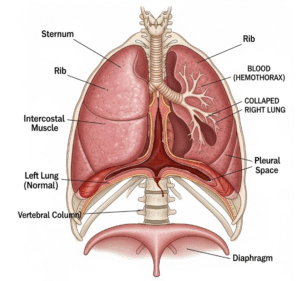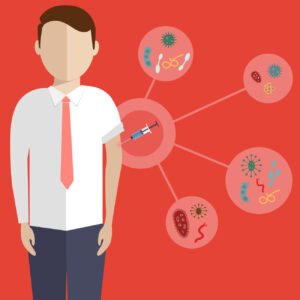Overview
Toxoplasmosis is an infectious disease caused by the protozoan parasite Toxoplasma gondii. It is one of the most common parasitic infections worldwide and can affect humans and animals. In most healthy individuals, toxoplasmosis causes mild or no symptoms, but in immunocompromised patients and pregnant women, it can lead to severe complications, including congenital infections. South Korea has advanced diagnostic laboratories, prenatal screening programs, and effective treatment protocols to manage toxoplasmosis. Awareness and early detection are essential to prevent severe outcomes, especially in vulnerable populations.
What is Toxoplasmosis?
Toxoplasmosis occurs when a person becomes infected with Toxoplasma gondii, typically through ingestion of oocysts or tissue cysts. The parasite can invade almost any tissue in the body, including muscles, the brain, and the eyes. The infection can be acute or chronic:
- Acute toxoplasmosis: May present with flu-like symptoms, fever, and lymph node swelling.
- Chronic or latent toxoplasmosis: The parasite remains dormant in tissue cysts and may reactivate if immunity decreases.
- Congenital toxoplasmosis: Occurs when a mother acquires the infection during pregnancy, potentially causing severe fetal complications.
In South Korea, routine prenatal screening and public health education help reduce the incidence of congenital toxoplasmosis.
Symptoms
Symptoms of toxoplasmosis vary depending on the patient’s immune status and stage of infection:
- Fever, fatigue, and muscle aches
- Swollen lymph nodes, especially in the neck and armpits
- Headache and sore throat
- Eye problems, including blurred vision or retinal inflammation (ocular toxoplasmosis)
- Confusion, seizures, or neurological symptoms in severe cases
- Flu-like symptoms that may persist for weeks
Most healthy individuals remain asymptomatic, which is why routine screening in at-risk groups is emphasized in Korea.
Causes
Toxoplasmosis is primarily caused by infection with Toxoplasma gondii. The main routes of transmission include:
- Consumption of undercooked or raw meat: Particularly pork, lamb, or venison containing tissue cysts
- Exposure to cat feces: The definitive host, cats, shed oocysts in their feces
- Contaminated soil or water: Ingestion of oocysts from gardening or unwashed produce
- Vertical transmission: From mother to fetus during pregnancy
- Organ transplantation or blood transfusion: Rarely, infection can be transmitted through infected organs or blood
Korean healthcare providers educate at-risk populations about proper food handling, hygiene, and avoiding exposure to cat litter during pregnancy.
Risk Factors
Certain factors increase susceptibility to toxoplasmosis:
- Pregnancy, especially first and second trimesters
- Weakened immune system due to HIV/AIDS, chemotherapy, or immunosuppressive therapy
- Handling raw meat or gardening without protective measures
- Exposure to environments contaminated with cat feces
- Eating undercooked or contaminated food
- Poor hygiene practices
Preventive strategies in South Korea focus on educating high-risk groups, including pregnant women and immunocompromised patients.
Complications
While many infections are mild, toxoplasmosis can lead to serious complications:
- Congenital toxoplasmosis: Can cause miscarriage, stillbirth, hydrocephalus, or neurological and ocular defects in the fetus
- Ocular toxoplasmosis: May lead to vision loss or retinal scarring
- Severe systemic disease: In immunocompromised patients, including encephalitis, pneumonia, or multi-organ involvement
- Neurological effects: Seizures, confusion, or cognitive impairment in severe cases
Early diagnosis and treatment in South Korea help prevent these complications and improve patient outcomes.
Prevention
Preventive measures aim to reduce exposure to Toxoplasma gondii:
- Proper food handling: Cook meat to safe temperatures, wash fruits and vegetables thoroughly
- Hygiene with cats: Avoid contact with cat litter during pregnancy; wash hands after handling cats
- Use gloves when gardening: To prevent contact with contaminated soil
- Avoid drinking untreated water: Ensure water sources are safe
- Prenatal screening: Routine testing during pregnancy to detect early infection
- Education: Awareness programs about routes of transmission and preventive behaviors
South Korea implements public health initiatives to educate high-risk populations about lifestyle changes to prevent infection.
Treatment Options in Korea
Treatment of toxoplasmosis in Korea depends on the patient’s health status and severity of infection:
Diagnosis:
- Blood tests to detect antibodies (IgG and IgM) against Toxoplasma gondii
- PCR testing for detection of parasite DNA
- Imaging studies, such as ultrasound or MRI, for fetal or neurological involvement
- Ophthalmologic examination for ocular toxoplasmosis
Medical Treatments:
- Pyrimethamine and sulfadiazine: Standard treatment for acute infections, often combined with folinic acid to prevent bone marrow suppression
- Clindamycin or azithromycin: Alternatives in patients who cannot tolerate standard therapy
- Spiramycin: Used in pregnant women to reduce fetal transmission
- Supportive care: Pain management, hydration, and monitoring of organ function
Follow-up and Supportive Care:
- Regular monitoring of antibody levels and infection progression
- Prenatal follow-up for congenital cases
- Patient education on lifestyle modifications and preventive measures
- Long-term care for ocular or neurological complications if present
Korean hospitals provide comprehensive care, combining accurate diagnosis, effective pharmacologic therapy, and preventive counseling to minimize the impact of toxoplasmosis.













